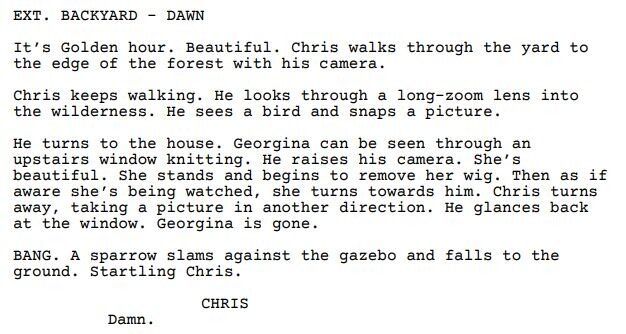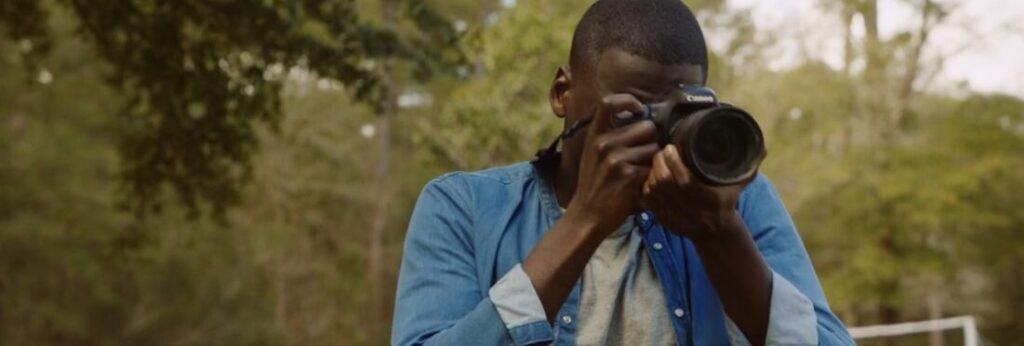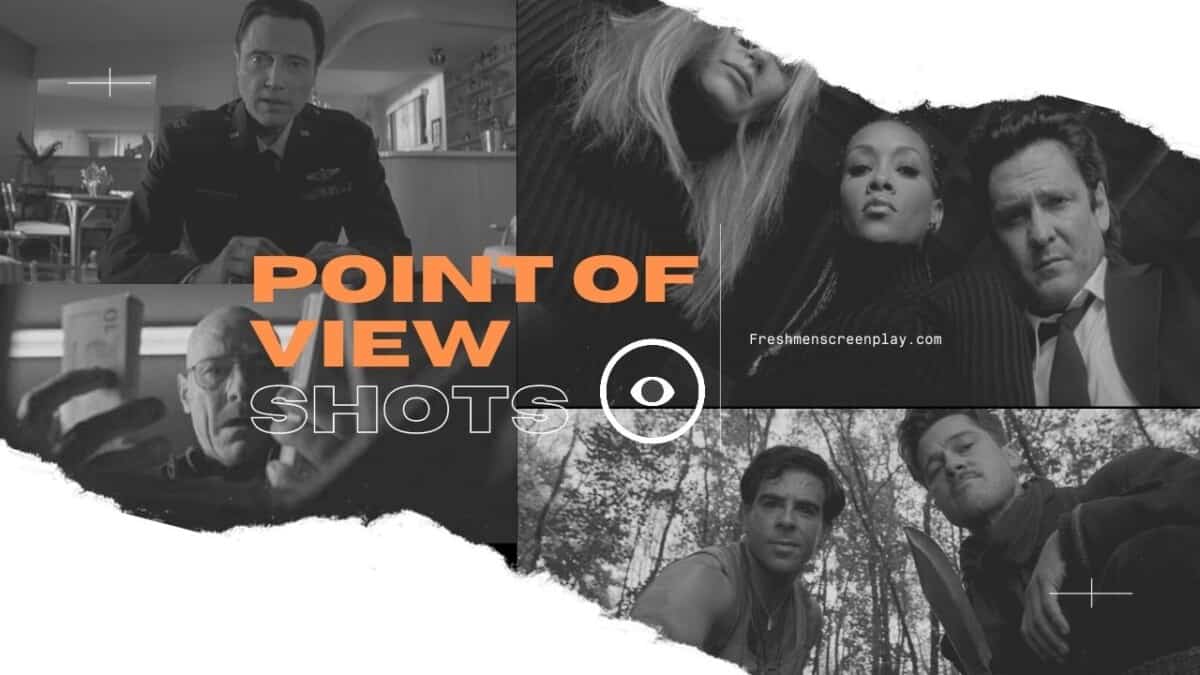Welcome to the P.O.V (Point of View) shot guide. Here we answer all questions around when, why, and how to use this magical technique when screenwriting.
What is POV in screenwriting? P.O.V stands for Point of view. It’s used when you want to show the action of a scene from one person’s perspective. We see what the character sees.
Example:
John slithers his head out the bushes.
JOHN'S POV:
The woman darts into the house. An UNKNOWN MAN at her back.
This is the most famous and widely used way.
If it’s something quick. You can write:
JOHN'S POV - THE LIGHT BULB
The light flickers back on.
But there’s another way to write a P.O.V shot that will be less intrusive to the reader’s eyes.
Example 2:
John slithers his head out of the bushes.
He eyes a woman darting into the house. An UNKNOWN man at her back.
Do you see the difference?
Example two keeps the flow of the screenplay and the first example may bring the reader out of the story.
P.O.V Shot Example
Let’s see a famous example of how other screenwriters have used them in the past.
Get out (2017) has some great P.O.V shots using the main character’s camera.



Why use P.O.V Shots?
This shot allows the director to show rather than tell.
P.O.V shots can create tension and dramatic effect. Almost every horror movie that’s worth anything has at least one P.O.V shot.
Speaking of genres, what are the ones that use it most often?
- Horror
- Thriller
- Action
- Crime
- Romance
- Found Footage
Each of these genres has at least a couple of P.O.V shots per film.
Here are a few examples of how they are used.
The film Paranormal Activity is a one-hour-long CAMERA P.O.V shot.
Hardcore Henry was shot entirely from HENRY’S POV.
Take a look at this horror short that got David F. Sandberg a writer/director career in Hollywood.
The film wouldn’t work without the P.O.V shot.
When writing P.O.V shots think, what I’m I trying to control? Why I’m I trying to control it?
Why You shouldn’t use P.O.V Shots
Yes, not every time you get a chance to use one you should.

but if it’s the fifth one in the last ten minutes. It won’t be as effective. So…
USE THEM SPARINGLY.
In my last feature, I wrote. I used two P.O.V shots in the entire script. It was a horror.
When to use a P.O.V Shot
Use a point of view shot in highly dramatic situations.
Like in all the examples we went over. The highest point of tension in a thriller. A scare in a horror. The protagonist falling in love in a romance.
These moments deserve more. So give more.
When writing one thing I noticed is the more words a description has the slower the image appears to the reader. The fewer words the faster the image. P.O.V shots slow the reader’s speed and give focus.
Conclusion
You just learned:
- What a point of view shot is.
- How to use it.
- Why you would or wouldn’t use it.
- When to use it.
I think this subheader is a great way to enhance your screenplays and paint a perfect picture for your reader.
Now its time to hear from you:
Did I miss anything?
In what ways are you going to use P.O.V shots?
How have you seen it used differently from the examples shown?
Whatever your answer is let’s hear it in the comments below.
Happy writing.

